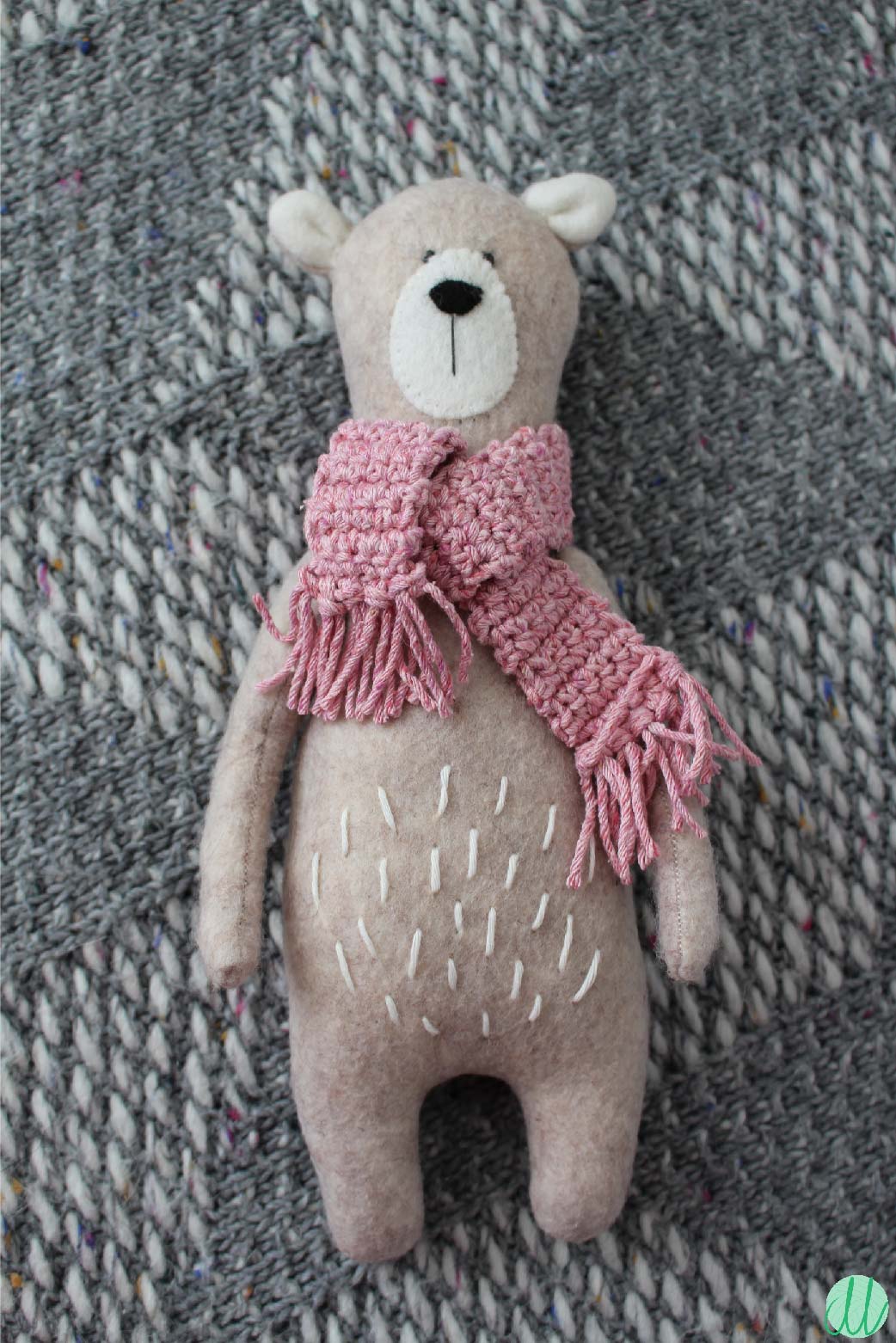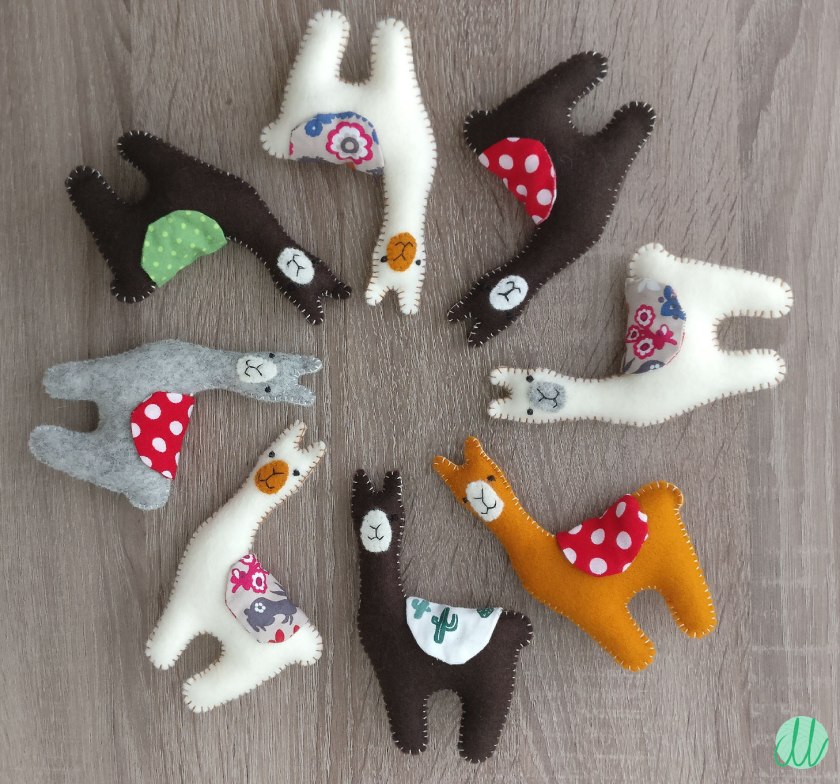*Nederlands zie hieronder
We probably all know someone who will graduate from their studies, and how nice is it to give this personalized cookie monster hanger with graduation hat as a gift? I designed it for a friend of mine, who recently received her doctorate degree. Perhaps you wonder why I choose cookie monster for this gift. Well, a couple of years back this friend was my supervisor when I was doing my very first internship in the lab. She always had cookies around in her office and when you were wondering who ate yours, you didn’t have to search for long;) As a goodbye gift I crocheted her a cookie monster jar and filled it with chocolate chip cookies. Unfortunately, I don’t have pictures of this yet anymore, but to honor the amazing memories I had from this time with her in the lab I made this funny cookie monster;)
Of course you don’t need such a reason to also make one! I drew all the pieces and you can download the pdf file below. Follow the step-by-step explanation to start right away. You don’t need a sewing machine for this, but you will need 100% wool felt in blue, black, grey and white, a needle, basic sewing thread, a ribbon, synthetic filling and all purpose glue. Have fun!

Cookie monster graduation hanger instruction:
Step 1: Cut out all the pieces from the pattern (in the picture you don’t see the two black pupils, but obviously you need to cut these too;))
Step 2: Glue the top of the graduation hat to the grey base. Then, pin the hat and the ribbon on one body piece.
Step 3: Hand sew the two body pieces on top of each other by using the blanket stitch. Check out this youtube video for an explanation of this stitch. When you reach the hat, you hand sew a straight line to attach all the pieces properly to the body. Leave open a gap of about 3cm at the bottom and fill up with some synthetic filling. Then, close the bottom with the blanket stitch.
Step 4: Glue the pupils on the eyeballs and glue this on the body. You could potentially embroider the eyes around to firmly attach it. Sew the mouth in the right place.
Step 5: Pin and sew the hands, feet and the cookie on the body as indicated on the picture.
Step 6: Add some red threads to the hat for the finishing touch and your hanger is ready!
*NEDERLANDS
We kennen allemaal wel iemand die binnenkort gaat afstuderen. Hoe leuk is het om dan je zelfgemaakte koekiemonster hanger met afstudeer hoed te kunnen geven als cadeautje? Ik heb hem ontworpen voor een vriendin die recentelijk haar doctoraat heeft behaald. Misschien vraag je je wel af waarom ik een koekiemonster hiervoor heb gekozen. Nou, enkele jaren geleden was die vriendin mijn begeleider tijdens mijn allereerste stage in het lab. Ze had altijd koekjes in haar kantoor en als je je afvroeg waar jouw koekjes waren gebleven, hoefde je niet ver te zoeken;) Als bedankje had ik destijds een koekiemonster pot gehaakt met chocolate chip koekjes. Helaas heb ik hier geen foto’s meer van, maar om de herinneringen aan de tijd met haar in het lab te eren heb ik deze grappige koekiemonster hanger voor haar gemaakt;)
Natuurlijk hoef je niet zo’n reden te hebben om er ook een te maken. Ik heb alle onderdelen getekend en je kunt het pdf bestand hieronder downloaden. Volg de stap-voor-stap beschrijving om direct aan de slag te kunnen gaan. Je hebt geen naaimachine nodig, maar wel 100% wolvilt in blauw, zwart, wit en grijs, een naald, naaigaren, een lintje, synthetische vulling en alleslijm. Veel plezier!
Stap 1: Knip alle onderdelen uit. In de foto zie je niet de zwarte pupillen liggen, maar deze heb je uiteraard ook nodig;)
Stap 2: Lijm de hoed op de grijze basis en speld deze samen met het lintje op 1 lichaamsdeel.
Stap 3: Naai met de hand de twee lichaamsdelen aan elkaar door gebruik te maken van de festonsteek. Zie deze youtube video voor een uitleg van de steek. Wanneer je bij de hoed komt, naai je een rechte lijn en zorg je ervoor dat alle onderdelen goed vastzitten. Laat een gat open van ongeveer 3 cm aan de onderkant en vul je hanger met synthetische vulling. Naai dan het gat dicht met de festonsteek.
Stap 4: Lijm de ogen op het lijfje. Je kunt de oogballen ook met een klein steekje rondom vastzetten. Naai de mond op de juiste plek.
Stap 5: Speld de handen, voeten en het koekje zoals aangegeven op de foto en naai ze vast.
Stap 6: Bevestig wat rode draadjes op de hoed om hem helemaal af te maken.
Posts that might be of interest to you/ Posts waar je mogelijk ook in geïnteresseerd bent:









